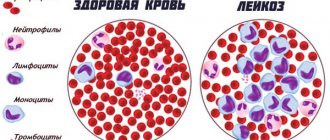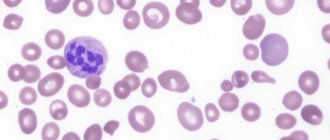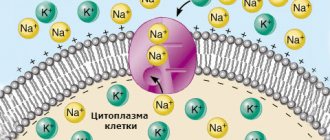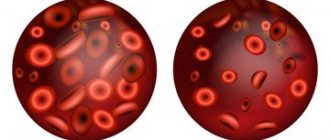Doctors call atelectasis a pathological phenomenon when the whole lung, or part of it, collapses as a result of a decrease in air intake, or the capacity of the alveoli. This pathology can only be diagnosed with radiation diagnostics, so the doctor must know what atelectasis looks like on an x-ray and what to do if it is detected.
The pathology is dangerous due to incomplete expansion of the lungs, and, as a result, a decrease in blood oxygenation and oxygen starvation of tissues. Necrosis and decay of damaged tissue also occurs, which leads to the development of intoxication of the body.
Atelectasis of the lung
Types of the disease and its place in the classification
Atelectasis is not a separate disease, it is only a pathological syndrome that occurs in other diseases and disorders, and is their complication. Most often it occurs when one of the bronchi is blocked. If the main bronchi are damaged, the entire lung collapses. Lobar and segmental atelectasis occur in case of obstruction of the bronchi of the corresponding caliber.
Sometimes subsegmental atelectasis is possible, which looks like narrow stripes located in different parts of the pulmonary field.
In case of damage to bronchioles, lobular lesions look like rounded compactions with a diameter of up to two centimeters. There are also disc-shaped or lamellar atelectasis, which often arise as complications after surgical interventions. They look like narrow strips that cross the lung fields in the supradiaphragmatic zones.
Since the pressure in the chest cavity drops, the diaphragm is pulled up. In the case of small volumes of affected tissue, the severity of these symptoms weakens, and diagnosing the pathology becomes more difficult. The Holtzknecht-Jacobson symptom complex helps - during the inspiratory phase of breathing, the mediastinum seems to “suck” to the lungs, which can be seen during fluoroscopic examination or kymography.
Compression atelectasis of the lung
The second, important and very common cause of atelectasis is compression of the lung. With all painful processes that limit the free space in the chest cavity for the expansion of the lungs, the latter are compressed from the outside into a larger space in a smaller space, and, due to this, the air is squeezed out of them.
Thus, compression atelectasis occurs with pleuritic exudate, thoracic hydrops, pneumothorax, significant cardiac hypertrophy, pericardial exudate and aortic aneurysms. In exactly the same way, when the diaphragm is strongly pushed upward, atelectasis of the lower lobes of the lung occurs, caused by abdominal dropsy, flatulence, abdominal tumors, etc.
Etiology of this pathology
The causes of the disease are varied; impaired filling of the lungs with air can occur when:
- Pneumonia.
- Neoplasms of the lungs and bronchi.
- Pulmonary infarction.
- Empyema of the pleura.
- Hydrothorax.
- Pneumothorax.
- Aspiration of foreign bodies.
- Aspiration of food masses.
Separately, primary pulmonary atelectasis is distinguished - a condition of a newborn in which after birth the child’s lungs did not have time to fully or partially expand, the alveoli are in a collapsed state and are not filled with air. Its cause is either obstruction of the bronchi with amniotic fluid and mucus, or a disruption in the production of surfactant during fetal development.
Atelectasis of the left lung
Treatment of pulmonary atelectasis
When treating primary pulmonary atelectasis in newborns, in the first minutes of life, the contents of the respiratory tract are suctioned with a rubber catheter, and, if necessary, tracheal intubation and lung expansion are performed.
In case of obstructive atelectasis caused by a bronchial foreign body, therapeutic and diagnostic bronchoscopy is necessary to remove it. Endoscopic sanitation of the bronchial tree (bronchoalveolar lavage) is necessary if the collapse of the lung is caused by the accumulation of secretions that are difficult to cough up. In order to eliminate postoperative lung atelectasis, tracheal aspiration, percussion chest massage, breathing exercises, postural drainage, and inhalations with bronchodilators and enzyme preparations are indicated. For pulmonary atelectasis of any etiology, it is necessary to prescribe preventive anti-inflammatory therapy.
In case of lung collapse caused by the presence of air, exudate, blood and other pathological contents in the pleural cavity, urgent thoracentesis or drainage of the pleural cavity is indicated.
ICD 10 code for pulmonary atelectasis : J98.1 Pulmonary collapse
Development mechanism
Depending on the immediate cause that prevents the alveoli from filling with oxygen, atelectasis can be:
- Obstructive, associated with compression of the bronchi.
- Compression, which occurs as a result of external pressure on the lung (a heavy object, fluid in the pleura, tumors located outside the lungs).
- Contraction is the result of the proliferation of inelastic fibrous tissue, which does not allow the alveoli to expand.
- Acinar, which occurs when there is insufficient surfactant in premature infants.
Pathological anatomy
In most cases of both congenital and acquired pulmonary atelectasis, airless places are located in the posterior lower parts of the lungs, but atelectatic places can also be located in other parts of them, for example, in the region of the anterior edges or in the pulmonary apex. Sometimes atelectasis of the entire pulmonary lobe is observed when, due to some local process, for example, cancer of the esophagus or tuberculosis of the glands, compression of the bronchial branch supplying air to this part of the lung occurs.
The airless parts of the lung have a pale appearance, flabby, slightly wrinkled, but are always covered with completely smooth pleura. The surrounding air-containing parts protrude above the atelectatic parts, are swollen and give a completely different sensation when palpated. When cut, the atelectatic parts are deprived of air; the knife does not cut them as easily as the parts containing air; they do not crack when cut, like healthy parts, and, due to their greater specific gravity, sink in water, while healthy parts of the lung, due to the air content in them, float on the surface.
Sometimes atelectasis is difficult to distinguish, at least macroscopically, from lung consolidations. There is, however, a simple sign that is characteristic at least of fresh atelectasis, namely, when air is blown into the afferent bronchus, the atelectasis disappears. In later stages, however, this is no longer possible, since the walls of the alveoli and smallest bronchi are then already welded together by connective tissue.
The color of the airless parts varies depending on the type of disease. With atelectasis caused by blockage of the afferent bronchus, for example, due to catarrhal inflammation of the mucous membrane, the adherent parts have a dark red color with a bluish tint, their vessels are still filled with blood. With atelectasis, caused by compression of part of the lung, most of the blood is also squeezed out of the vessels, as a result of which the atelectatic parts have a pale, brownish or bluish, and ultimately gray color. Of course, the volume of the lung in such cases is very small. With arrowroot atelectasis, in most cases, along with the consequences of insufficient ventilation and breathing of the lower parts of the lungs, difficulties develop in the pulmonary circulation, which may depend on both the heart and blood vessels. Blood accumulates in the lowest located places, passive hyperemia and hypostasis develop, as a result of which the airless parts are dark red in color. If the air from them is completely displaced or absorbed, then edema often appears, due to which the affected part of the lung has a larger volume.
Histological changes in lung atelectasis of the first stage are quite insignificant. Both layers of cells of the opposing mucous membranes in small bronchioles, infundibulae and alveoli are adjacent to each other, being separated only by a thin layer of mucus. While atelectasis can still be eliminated by the entry of air, no histological changes occur, but later cell proliferation and connective tissue development significantly alter the normal picture. First, a so-called compaction occurs due to collapse. The development of connective tissue comes from the interlobular septa; Inflammatory growths weld together layers of mucous membrane cells adjacent to each other, the epithelium of the alveoli dies and fills with cellular decay the parts of the lung that once contained air, from which the blood has mostly been removed, so that all together forms a hard, dense and pale mass.
Techniques used in radiological diagnosis of atelectasis
At the first stage, it is customary to take a survey X-ray of the chest organs. It represents a summary image of the entire thickness of the tissues located inside the chest, with the shadows of some parts being to one degree or another superimposed on the shadows of others.
Right upper lobe atelectasis
In order to clarify the topography of the pathological process, it is necessary to take photographs in additional projections, for example, lateral ones. X-ray tomography is an excellent method for layer-by-layer visualization of chest structures, which allows you to accurately determine the localization of the pathological focus and its characteristics.
Magnetic resonance imaging is used relatively rarely in lung studies. In cases where it is necessary to differentiate pulmonary pathology from vascular and heart diseases, for example, pulmonary embolism, heart failure, ultrasound is also used, however, it visualizes the lung tissue itself poorly.
Consequences of the disease
With this disease, patients usually survive, but only if they received qualified medical care in a timely manner.
In the case of prolonged existence of atelectasis, the impossibility of straightening the lung using conservative methods, or the formation of bronchiectasis, the question of removing the affected area of the lung lobes is raised.
More medical information about the disease for specialists and students at the following links:
- The causes and X-ray images of atelectasis on the website “Radiology24“
- Thoracic Imaging: Pulmonary And Cardiovascular Radiology by Richard Webb and Charles Higgins
- Chest Radiology: Plain Film Patterns and Differential Diagnoses sixth edition by James C. Reed
- The Chest X-Ray: A Survival Guideby Gerald De Lacey, Simon Morley and Laurence Berman
- The Comet Tail Signby Vince A. Partap November 1999 Radiology,213, 553-554.
- Acute Pulmonary Thromboembolism: A Historical Perspective by Sudhakar NJ Pipavath1 and J. David Godwin. AJR September 2008 vol. 191 no. 3 639-641.
- Guidelines for Management of Small Pulmonary Nodules Detected on CT Scans: A Statement from the Fleischner Society by Heber MacMahon et al.Radiology 2005; 237:395-400
- Pulmonary septic emboli: diagnosis with CT.by JE Kuhlman, EK Fishman, and C TeigenRadiology 1990, volume 174, issue 1.
- High-Resolution MDCT of Pulmonary Septic Embolism: Evaluation of the Feeding Vessel Sign by Jonathan Dodd et al AJR 2006; 187:623-629
- Pulmonary Tuberculosis: Up-to-Date Imaging and Managementby Yeon Joo Jeong et alAJR 2008; 191:834-844
- Bronchial Atresia by Matthew G. Gipson et al September 2009 RadioGraphics,29, 1531-1535.
- Fleischner Society: Glossary of Terms for Thoracic Imaging
X-ray picture of atelectasis
An atelectatic lung does not fill with air and appears as a uniform shadow on an x-ray. There are also a number of additional signs that help determine atelectasis:
- The lung is reduced.
- The mediastinal organs are shifted towards the lesion.
It is believed that these signs are sufficient to reliably diagnose a “collapsed lung” when performing radiography, tomography and fibrobronchoscopy. However, displacement of organs towards the lesion against the background of extensive darkening of the pulmonary field can also be observed in fibrothorax with cirrhosis of the lung.
Atelectasis of the upper lobe of the right lung and lingular segments of the left lung
Diagnostics
Diagnostic measures include collecting anamnesis, examining the patient, and using special research methods.
The patient's breathing weakens and asymmetry of respiratory movements appears. When percussing (tapping) the chest in the projection of the atelectatic focus, a shorter and dull sound is determined than in the surrounding tissues.
The most informative method to accurately make a diagnosis is radiographic examination. With atelectasis, the lungs change in density, which is reflected in the photographs as darkening of the affected area. The dome of the diaphragm changes configuration, the mediastinal organs move to the area of the compressed area. There is a decrease in the distance between the ribs in the area of the pathological focus.
To determine the gas composition of the blood, a biochemical study is carried out. To clarify the degree and extent of pathology, bronchoscopy, angiopulmonography and bronchography, and computed tomography are performed.
Differential diagnosis with other pulmonary syndromes
However, differential diagnosis is carried out according to the very nature of the darkening - in cirrhosis it is heterogeneous, inhomogeneous. Against its background, areas of entire lung tissue, swollen lobules and fibrous cords are visible.
Infiltrative lesions usually also cause shadows in the lungs, however, despite the similar appearance of the shadow, there is no characteristic shift of the mediastinum. Sometimes it is possible to distinguish the lumens of the bronchi against the background of the shadow, which makes it possible to definitively differentiate this group of pathologies from atelectasis.
Extensive darkening of high intensity can be caused not only by an increase in the density of the lung tissue, but also by the accumulation of fluid in the pleural cavity, since in the case of profuse effusion, the darkening becomes homogeneous and becomes quite extensive, which may resemble the picture of a collapsed lung.
The key point in the differential diagnosis of these two conditions is the displacement of the mediastinal organs. In the case of fluid in the pleural cavity, intrathoracic pressure increases, and the mediastinum shifts to the side opposite to the lesion.
Right upper lobe atelectasis
In cases where local atelectasis of the segmental or lobar level occurs, you first need to give a topographic description of the darkening. This makes it possible to determine which lobe, segment or substrate has become compacted. This task is easier to perform if photographs were taken in two projections, since each lobe and each segment occupy a certain position inside the chest cavity.
Causes
The causes of pulmonary atelectasis are:
- Diseases: bronchial asthma, cystic fibrosis, tuberculosis, neuromuscular diseases, cancer, lymphadenopathy, pneumonia, myocardial hypertrophy, anomalies in the development of large vascular trunks, pathology of the inner wall of the bronchi, phrenic nerve palsy, scoliosis, sepsis.
- Other conditions: general anesthesia, a large amount of oxygen in the mixture for artificial ventilation of the lungs, acute lung collapse, increased pressure in the pleural cavity (pneumothorax, pleural empyema, chylothorax, hydrothorax and hemothorax, the presence of effusion), taking a significant amount of sedatives, hypothermia, prolonged immobility, foreign body in the lumen of the bronchus, traumatic injury and much more.
Risk groups include:
- smoking,
- overweight people
- people with chronic obstructive pulmonary diseases,
- severe forms of tuberculosis,
- who have undergone surgery on the chest organs.
When to suspect the presence of atelectasis, indications for radiography
The clinical picture of atelectasis is not specific. The symptoms of the disease that preceded this complication persist. However, a number of symptoms should make the doctor think about atelectasis, and serve as indications for a mandatory X-ray examination of the patient. In the case of acute development of large-volume atelectasis, patients complain of chest pain and a sharp increase in shortness of breath. Upon examination, cyanosis of varying severity is revealed, the affected half of the chest lags behind when breathing, and the breathing amplitude decreases.
With atelectasis, the patient may feel pain in the chest
Over the affected area of the lung, weakened breathing and dullness of percussion sound are heard. It is possible to reduce vocal tremors. Compensatory tachycardia may be observed, which at first provides a normal level of tissue oxygenation, despite the reduced oxygen capacity of the blood.
Hypotension very often develops, which can lead to collapse and shock. If atelectasis has developed against the background of an infectious disease, a jump in temperature is recorded. True, with the gradual development of the pathology, the symptoms are weakly expressed, and this pathology is diagnosed as a finding on an x-ray. The shadow often has a triangular shape, its apex facing the root of the lung.
Signs of pulmonary atelectasis
The signs of atelectasis generally coincide with the symptoms of the disease that accompanies it. So, with obstructive atelectasis, the doctor can usually easily find signs of pulmonary obstruction, and with compression atelectasis, many patients have symptoms of a lung or mediastinal tumor.
The first signs of a small affected area:
- the appearance of shortness of breath,
- the chest walls expand slightly when inhaling,
- the patient feels short of breath and weak.
When atelectasis occurs after bronchitis or pneumonia and the lung is extensively affected, all symptoms worsen sharply, breathing becomes more frequent, becomes irregular, and wheezing appears.
Signs of extensive atelectasis:
- Pale skin;
- Blue discoloration of the ears, nose, fingertips (peripheral cyanosis);
- Sometimes stabbing pain on the affected side;
- In case of infectious infection - fever;
- increased heart rate;
What does a white spot mean in a picture of tuberculosis?
In tuberculosis, a focal spot on a chest x-ray indicates the infiltrative stage of the disease, when mycobacteria begin to infect the lung tissue. In this case, the x-ray shows a path to the root from the side of the lesion (due to lymphangitis). Such radiological symptoms are called “primary tuberculosis focus”.
Radiographs for various types of tuberculosis
Multiple small disseminated shadows on both sides indicate miliary tuberculosis.
A single large shadow with a cavity inside (clearance) and a fluid level - an abscess formed against the background of destruction of the lung parenchyma - “ring shadow” syndrome.
A spot on an X-ray of the lungs in the projection of the pulmonary fields reflects a pathological process, the causes of which should be established by additional research.
In children
The most common cause of atelectasis (acinar type) in newborns is a violation of the synthesis of surfactant, a complex of phospholipids produced by type II alveolar cells. Thanks to the surfactant, the surface tension in the area of separation of the air and water phases is reduced, which ensures the stabilization of the alveoli during exhalation; with its deficiency, respiratory distress syndrome of newborns develops and the alveoli collapse. As a result, the diffusion surface of the lungs leads to hypoxia of the restrictive type and worsening hyalinization of the alveolar membranes.
Atelectasis in children, as a primary failure to straighten terminal respiratory structures, also occurs as a result of hypoplasia or immaturity associated with prematurity.
In some cases, in infants after childbirth, the lungs do not expand completely due to mechanical blockage of the lumens of the bronchial tubes with mucus. Possible “flooding” of amniotic fluid as a result of asphyxia during childbirth, when the respiratory center is activated before the first breath.
Symptoms
The manifestations of rapidly developing atelectasis differ from the gradual onset of such a pathology. The patient usually:
- experiencing severe chest pain;
- pulse quickens;
- increased shortness of breath occurs;
- there is cyanosis and a lag during breathing acts in the affected area of the chest compared to the healthy side;
- decreased breathing and voice tremors;
- complications of infections, manifested in the form of fever.
Obstructive atelectasis syndrome manifests itself in the form of an unproductive cough and upon auscultation in the affected area, breathing cannot be heard or is sharply weakened.
Whereas the slow development of atelectasis is accompanied by subtle clinical manifestations and radiography is necessary for detection. It can lead to sclerotic changes in the lung tissue - so-called fibroatelectasis .











